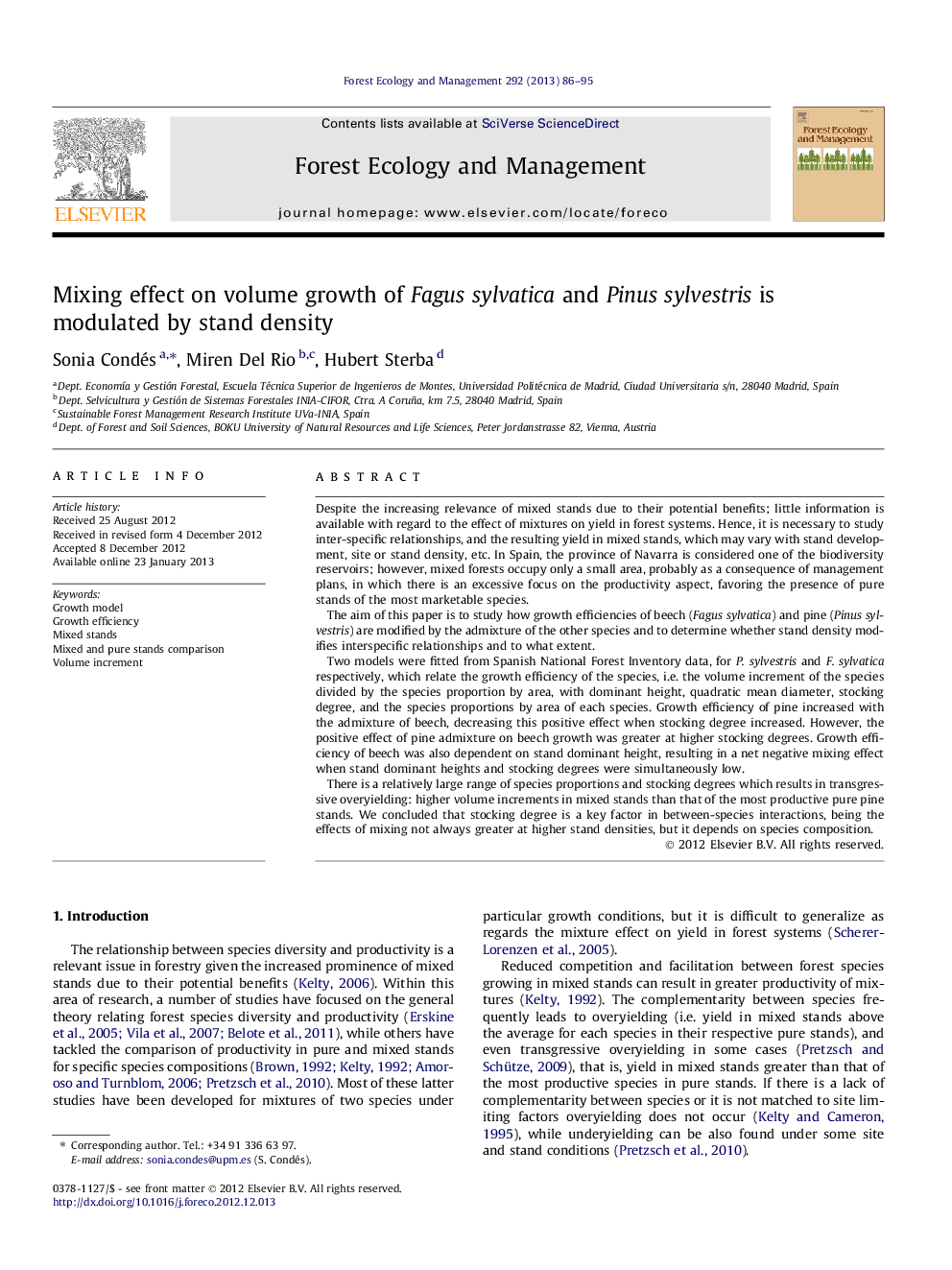| کد مقاله | کد نشریه | سال انتشار | مقاله انگلیسی | نسخه تمام متن |
|---|---|---|---|---|
| 87115 | 159232 | 2013 | 10 صفحه PDF | دانلود رایگان |

Despite the increasing relevance of mixed stands due to their potential benefits; little information is available with regard to the effect of mixtures on yield in forest systems. Hence, it is necessary to study inter-specific relationships, and the resulting yield in mixed stands, which may vary with stand development, site or stand density, etc. In Spain, the province of Navarra is considered one of the biodiversity reservoirs; however, mixed forests occupy only a small area, probably as a consequence of management plans, in which there is an excessive focus on the productivity aspect, favoring the presence of pure stands of the most marketable species.The aim of this paper is to study how growth efficiencies of beech (Fagus sylvatica) and pine (Pinus sylvestris) are modified by the admixture of the other species and to determine whether stand density modifies interspecific relationships and to what extent.Two models were fitted from Spanish National Forest Inventory data, for P. sylvestris and F. sylvatica respectively, which relate the growth efficiency of the species, i.e. the volume increment of the species divided by the species proportion by area, with dominant height, quadratic mean diameter, stocking degree, and the species proportions by area of each species. Growth efficiency of pine increased with the admixture of beech, decreasing this positive effect when stocking degree increased. However, the positive effect of pine admixture on beech growth was greater at higher stocking degrees. Growth efficiency of beech was also dependent on stand dominant height, resulting in a net negative mixing effect when stand dominant heights and stocking degrees were simultaneously low.There is a relatively large range of species proportions and stocking degrees which results in transgressive overyielding: higher volume increments in mixed stands than that of the most productive pure pine stands. We concluded that stocking degree is a key factor in between-species interactions, being the effects of mixing not always greater at higher stand densities, but it depends on species composition.
► Volume growth models for beech and pine in pure and mixed stands were fitted.
► The effect of mixture on growth efficiency depends on species composition.
► There are mixtures which result in even higher increments than in the most productive pure stands.
► We find that stocking degree is a key factor in between-species interactions.
► The effect of mixing is not always higher at high stand densities.
Journal: Forest Ecology and Management - Volume 292, 15 March 2013, Pages 86–95